At the Telmarine camp, Glozelle tells Miraz that enough weapons and armor for two regiments have been stolen from them. (In the book, the armor the dwarfs made was better than anything the Telmarines had by the way.) He also shows him a message the thieves left carved into the supply wagon they raided. YOU WERE RIGHT TO FEAR THE WOODS X. Sopespian wonders what X could mean. “Caspian,” says Miraz, “the Tenth.”
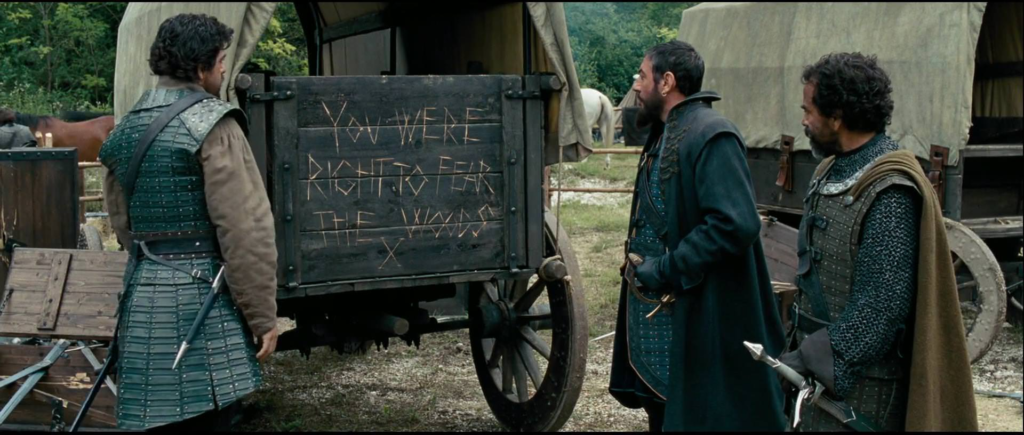
Glozelle: I apologize, my lord. The blame is mine.
Miraz: I know. Tell me, General, how many men did you lose?
Glozelle: None, my lord.
Miraz: None?
Glozelle: They came like ghosts in the dead of night. We never saw them.
Miraz: Then how do you explain your injuries?
Glozelle looks bewildered. Sopespian gives him a knowing look, no doubt trying to remind of their is-any-of-us-safe conversation. Suddenly, Miraz violently strikes Glozelle’s face, drawing blood. “I asked,” he says without raising his voice, “how many men were killed during this bloody Narnian attack?” Handing him a sword, he adds, “Of which you were a fortunate survivor? General?” Glozelle realizes to his dismay that Miraz wants him to kill some of his troops so that he can blame it on the Narnians and drum up support for the war effort. (Also, probably to punish said troops for not stopping the thieves.)
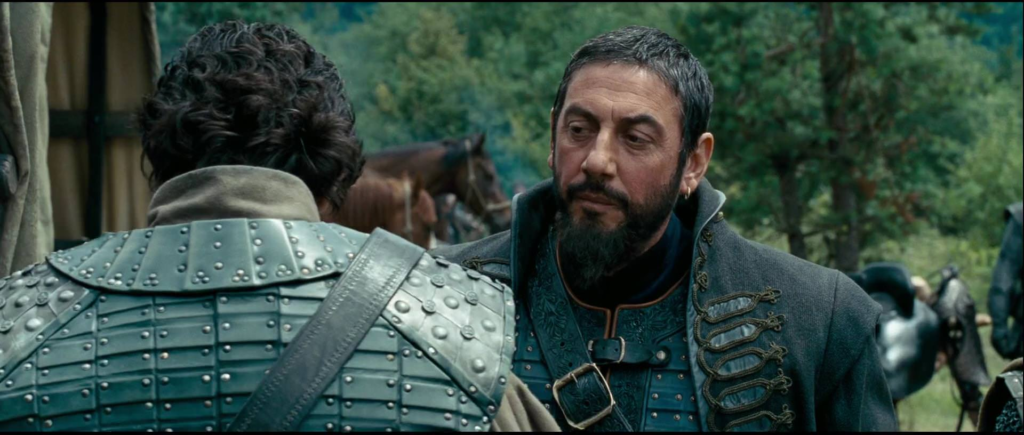
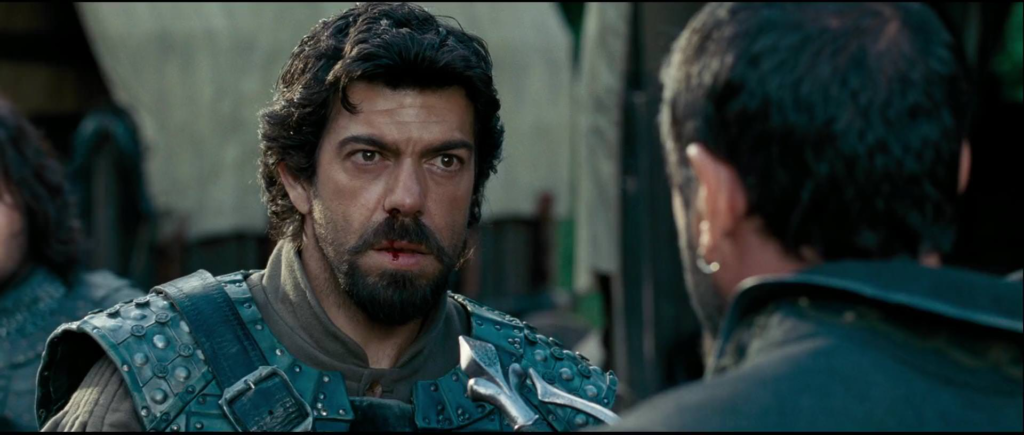
After weighing his options, he accepts the sword and says “three.” Miraz and Sopespian head back to Miraz’s horse. “I apologize, Lord Sopespian,” says Miraz. “Caspian is not a victim of this savage uprising. He is the instigator. It seems Narnia is in need of a new king.” He rides off. Sopespian and Glozelle exchange glances again and the scene ends with Glozelle about to kill the unfortunate three.
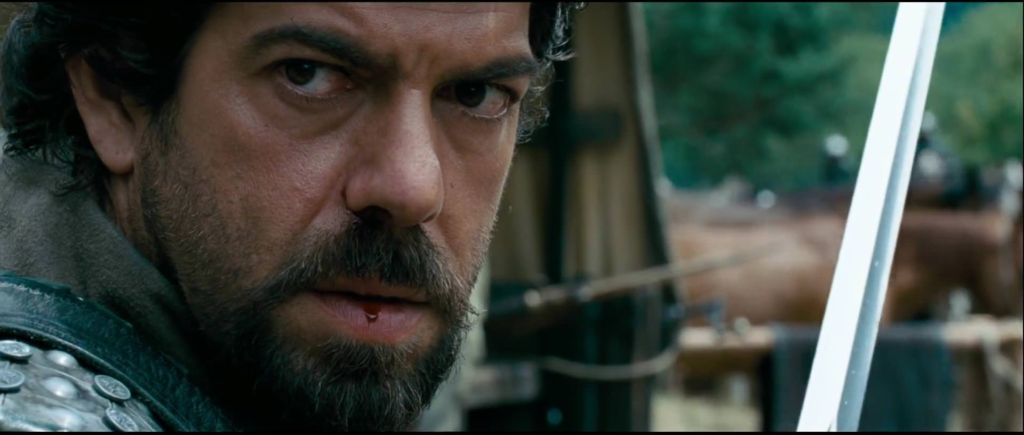
This little scene is original to this adaptation and in my opinion, it works splendidly. As I’ve mentioned before, the book gave no buildup to Glozelle and Sopespian’s rising enmity towards Miraz, not even introducing them by name until right when they become vital to the plot in the third-to-last chapter. I think that can be defended. The book’s plot is a bit plodding as it is and slowing down to focus on characters who wouldn’t be relevant to the end might make that worse. But having the subplot come nearly out of nowhere had some obvious drawbacks too. Not only do scenes like this in the movie eliminate them but they also make Miraz creepier than he is in the book. (Sergio Castellitto’s performance continues to excel.) If I have a quibble, it’s that this makes Glozelle and Sopespian’s motivations for turning against Miraz much more sympathetic than they are in the source material. But if the adaptation had to make that alteration, at least it does so well.
Meanwhile, the good guys are trekking through the woods. Trufflehunter privately asks Trumpkin what the two kings and two queens of old are like.
Trumpkin: Malcontents. Complainers. Stubborn as mules in the morning.
Nikabrik: So, you like them then?
Pause
Trumpkin: Well enough.
Lucy overhears this and smiles. It’s a predictable bit of humor but it makes me smile too. Well, smirk anyway. As a fan of the book, I’d object that it makes Trumpkin less respectful and deferential to the Pevensies than he is at this point there, but I’ve already written about that.
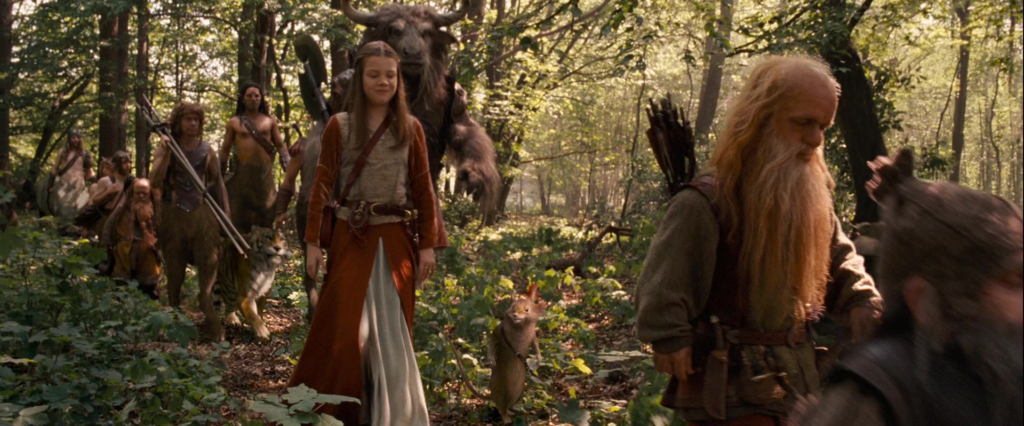
Anyway, the Narnians emerge from the trees into a clearing where an ancient mound towers. There was a bit of dialogue cut from the movie in which Glenstorm explained that the mound has been abandoned for hundreds of years and that only the mice knew of its existence. This probably should have been kept in the final cut since it’s a bit odd to see the Narnians encamped at a major new location without a word of introduction to it. The bit about the mice was also a nice nod to a minor revelation from the book that the movie would cut. Still, there will be an explanation of sorts in a matter of moments, so it’s not too annoying if you’re patient.
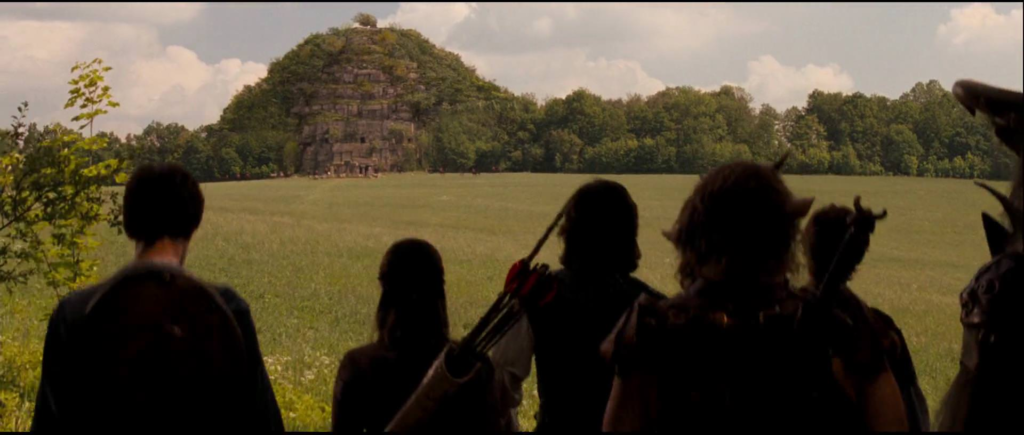
Peter, Susan, Edmund and Lucy do a heroic walk into the entrance. Caspian hangs back in awe of them and maybe just a tad envious. There’s a funny moment where the youngest of the centaurs doing a military salute (Gomez Mussenden, son of costume designer Isis Mussenden) nearly decapitates Lucy.
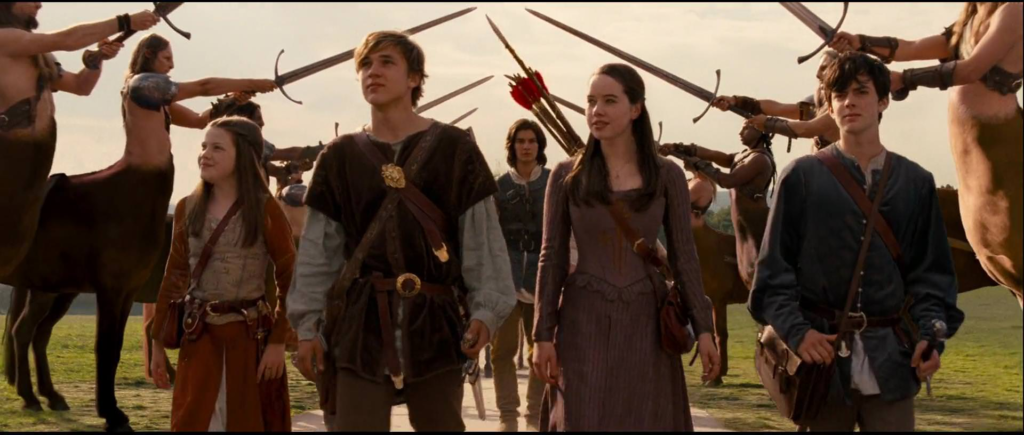
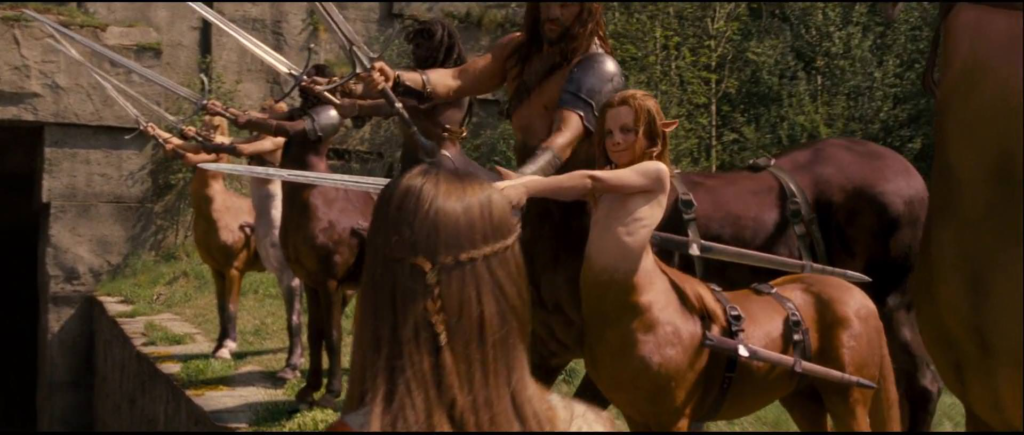
In the torchlit tunnels that riddle the mound, we see Narnians hard at work forging weapons. “It may not be what you are used to, but it is defensible,” Caspian tells Peter. Susan directs Peter’s attention to a less busy tunnel where she shows him images from the last movie, of her and Lucy riding on Aslan’s back, of all four Pevensies standing by their thrones on the day of their coronation, carved into the stone walls. The kings and queens of old stare at these memorials of themselves. The melancholy music that plays over this is nicely haunting. “What is this place?” Lucy asks Caspian. (I told you we’d get an explanation of sorts soon!) “You don’t know?” Caspian asks, surprised. He takes a torch from the wall and leads them around a bend. The camera lingers on a carving of Tumnus by the lamppost. When I first saw the movie, I was irritated by this since I had clearly seen the iconic image behind the characters, and I didn’t need the movie to stop and point it out to me. But, on repeat viewings, I’ve come to appreciate that we hear the musical theme of his lullaby on the soundtrack at this moment.
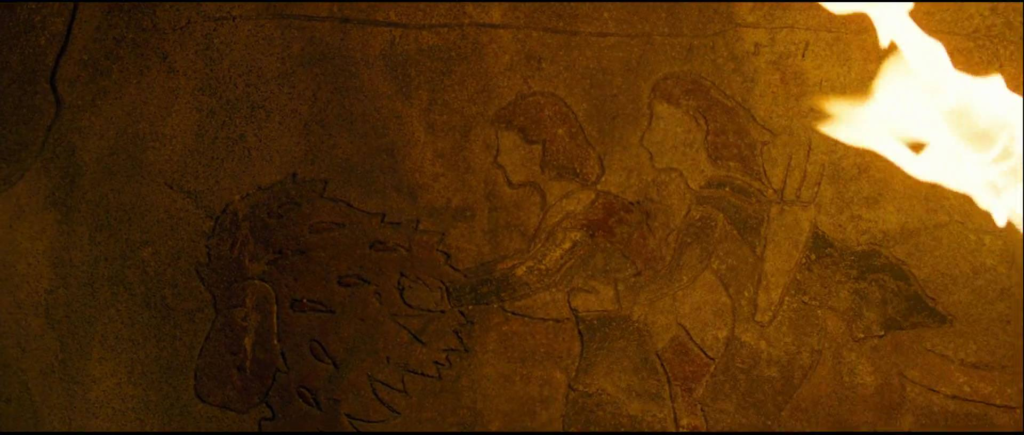
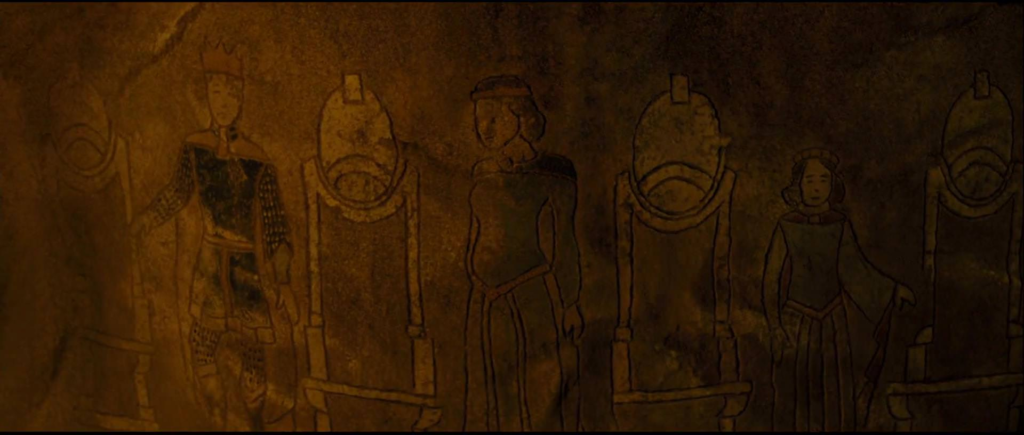
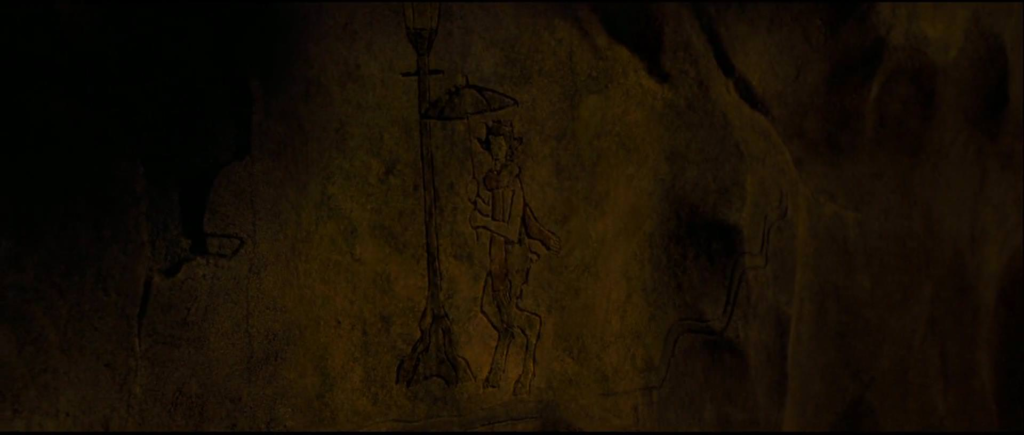
Caspian leads the Pevensies into a dark room. He sticks his torch in a vat of lamp oil (or something) that runs along the wall, setting off a chain reaction of fire. This illuminates stone carvings of various Narnian creatures on the walls. By far the biggest is the one of Aslan on the far wall facing the Pevensies.
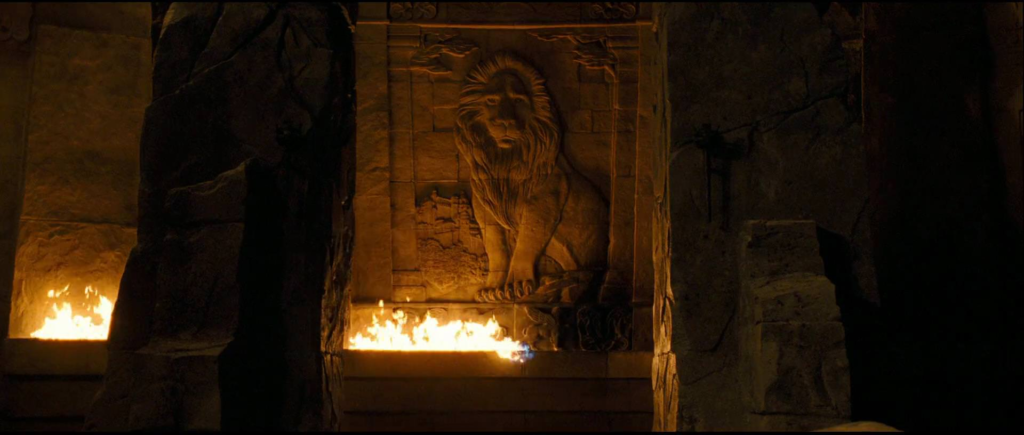
But that’s not the big reveal. The big reveal is the remains of the Stone Table in the center of the room.
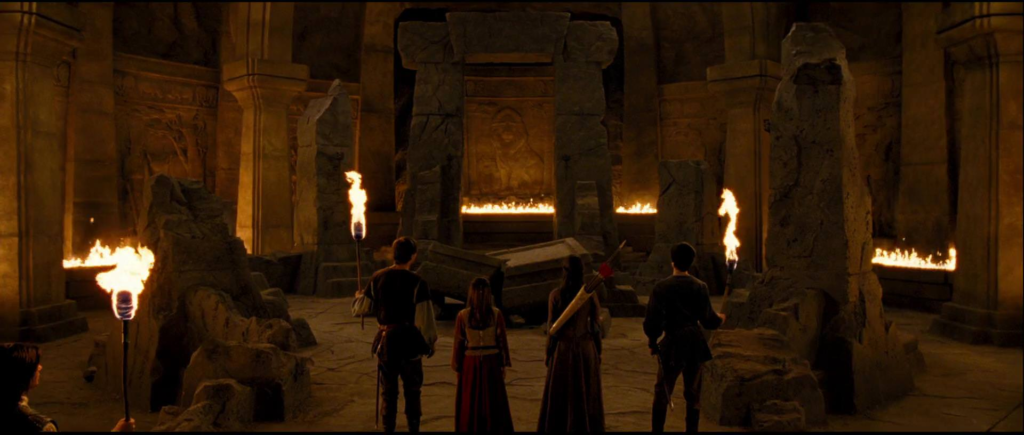
Lucy slowly and gravely walks toward the sacred artifact with her siblings following behind her. She sets her hand on the stone, turns to Susan and says, “He must know what he’s doing.” This is a callback to what Susan said to her in the last movie when Aslan had let the White Witch and her soldiers kill him. (I wrote about the line at some length.) This movie is trying to explore the classic objection to Christianity:[1]It applies to other worldviews that believe in a benevolent deity too but for purposes of simplicity, I’ll just refer to Christianity. I sincerely hope my readers who practice other religions … Continue reading How could a good God allow evil? The thing is the movie doesn’t really have much of an answer to this objection. To be fair, neither does the book but in the book, the question is implicit rather than explicit-if it’s there at all. This moment is the closest we get with Lucy being reminded of a time when it really seemed that Aslan had dropped the ball, only for it to turn out that he had a great plan all along. Granted, it might be harder to justify why he would let Narnia be conquered, many of its citizens be killed and those that remained be forced to live as outlaws for generations, but this reminder gives her hope. And, for me, the moment works, largely thanks to Georgie Henley’s powerful performance. She conveys that Lucy’s doubts aren’t totally laid to rest, but she still feels she’s been given a good reason to hold onto her faith and she’s taking comfort in it. You could also infer that she’s saddened by the memory of the horrible pain Aslan went through but that she’s also encouraged by it to trust his goodness.
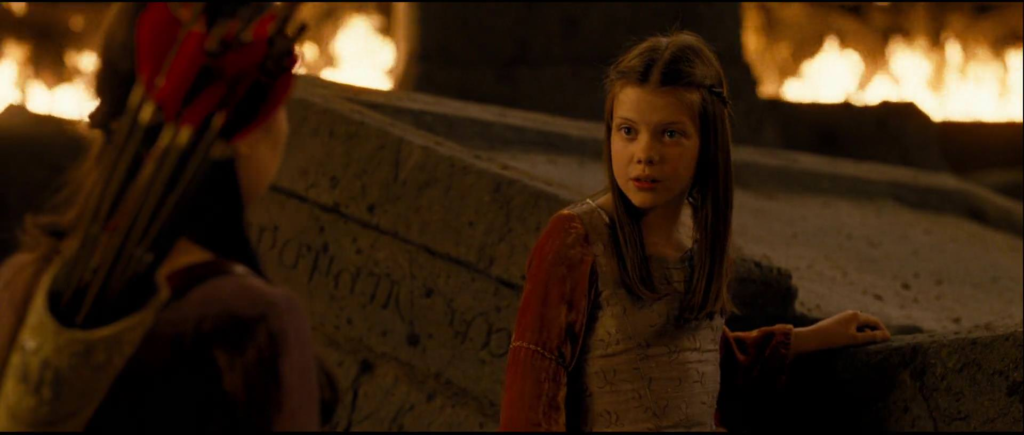
You know whose trust in Aslan hasn’t been bolstered by this? Peter. “I think it’s up to us now,” he says curtly, evidently not liking to be reminded of the lion.
We cut to another day or possibly the same day later. A faun sentry outside the mound, which is called Aslan’s How in the book by the way, spots a Telmarine scout watching from the thicket. Originally, this was part of a scene of Susan training the Narnian archers and winning an archery contest with a flirtatious Caspian. They would have been the ones to notice the scout at the end. Since I consider the idea of adding romance between these characters stupid, I approve of this cut. That being said, I also appreciated that the deleted scene had dialogue similar to an archery contest between Susan and Trumpkin in the book, a follow up to his fencing match with Edmund. And there’s a case to be made that if the movie had to include the romantic subplot, it would have been better to develop it. But, no, no, no! I did not type that. The less flirting between Susan and Caspian, the better.[2]I should take this opportunity to say that I’m sure Anna Popplewell and Ben Barnes could play a good couple. I just don’t think that couple should have been these characters.
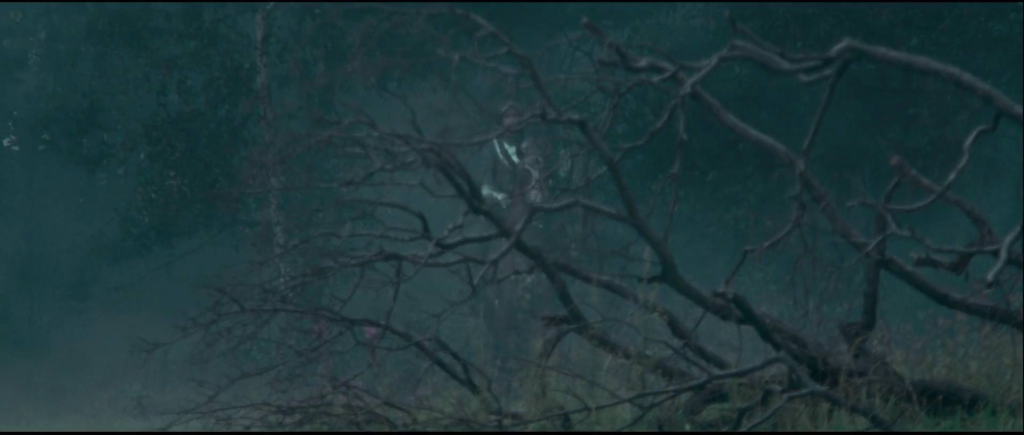
Inside the How, the Narnians hold a meeting. “It’s only a matter of time,” says Peter. “Miraz’s men and war machines are on their way.” In the book, the Telmarines were never described as having war machines but, you know, Hollywood. Actually, you know what? I agree with Hollywood on this one. If you’re going to do a war movie about heroic underdogs, why not give the bad guys war machines they don’t have? It makes sense. Back to the scene. “That means those same men aren’t protecting his castle,” Peter continues. “What do you propose we do, your Majesty?” asks Reepicheep. Peter and Caspian both start to answer at the same time. Awkward silence ensues and Peter glares Caspian into silence. In the book, by the way, King Miraz objects to the idea of High King Peter and King Edmund on the grounds that “how could there be two kings at the same time?” It’s kind of depressing that the adapters share the same mindset as the original story’s villain. Oh well.
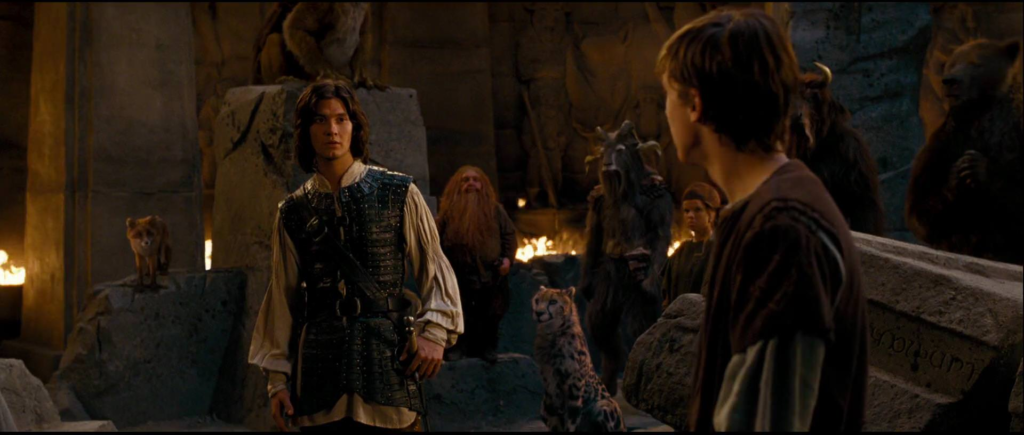
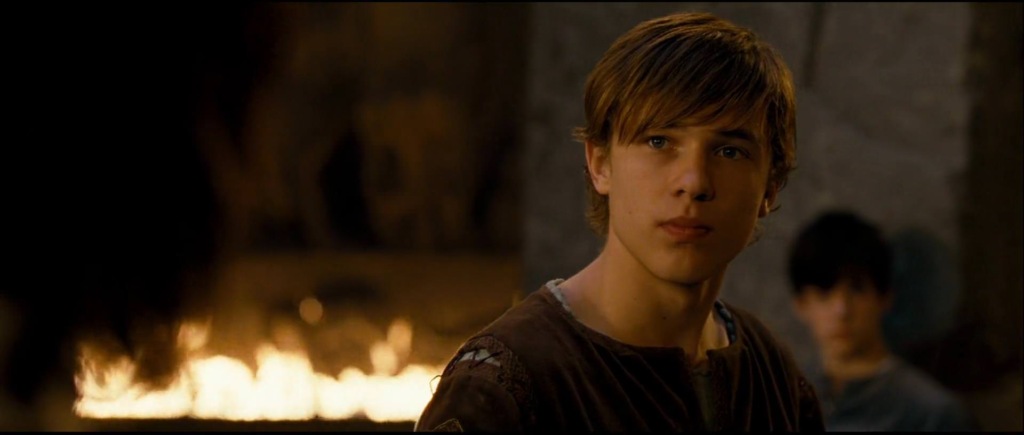
Peter: Our only hope is to strike them before they strike us.
Caspian: But that’s crazy! No one has ever taken that castle!
Peter: There’s always a first time.
Trumpkin: We’ll have the element of surprise.
Caspian: But we have the advantage here!
Susan: If we dig in, we could probably hold them off indefinitely.
Peter looks mad at her for not siding with him. Caspian looks pleasantly surprised. See, I don’t just have a problem with the romance thing because it’s not in the book or because it’s a stereotypical Hollywood addition. We can’t tell here whether Susan is being reasonable in supporting Caspian or whether she’s just doing it because she’s attracted to him. It’s not impossible for her to have both motivations of course. Still, I feel like she’d be a more creditable leader if we knew she was genuinely approaching this from a neutral standpoint like the other characters.
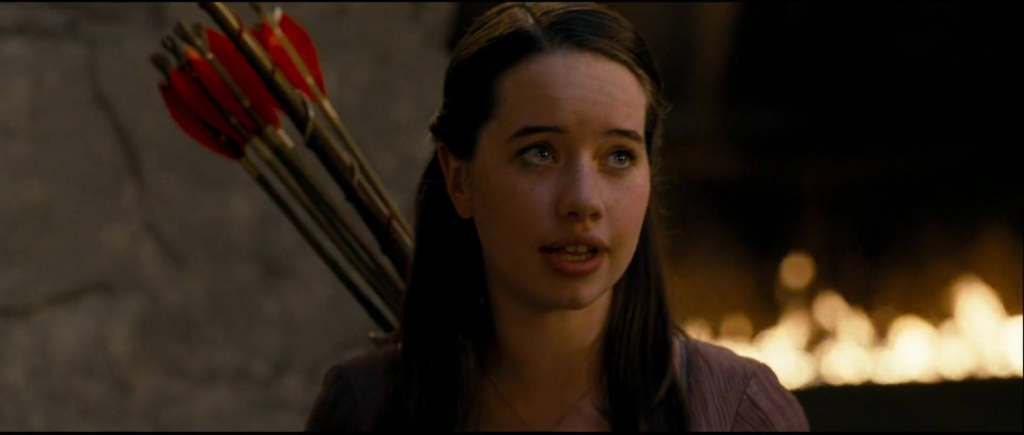
Trufflehunter: I, for one, feel safer underground.
Peter (to Caspian): Look, I appreciate what you’ve done here. But this isn’t a fortress. It’s a tomb.
Edmund: Yes, and if they’re smart, the Telmarines will just wait and starve us out.
Pattertwig (cheerfully): We could collect nuts.
Reepicheep: Yes, and throw them at the Telmarines! Shut up!
I wrote before that I dislike the way this adaptation makes Reepicheep all sarcastic and quippy, but I actually think that line would work me if Izzard delivered it in a lordlier tone and if they cut the undignified “shut up” at the end. Anyway, Reepicheep tells Peter he’ll be happy to storm the castle. “If I get your troops in, can you handle the guards?” Peter asks Glenstorm. Glenstorm looks a little unsure. He exchanges glances with Caspian before replying but his reply is “Or die trying, my liege.” “That’s what I’m worried about,” says Lucy who is seated on the Stone Table. In the book, the characters would never dare sit on that, considering it disrespectful but I don’t mind giving the movie a pass since they’re clearly trying to imply visually that Lucy is the only one in the room thinking about Aslan right now.[3]Well, Trufflehunter might be too.
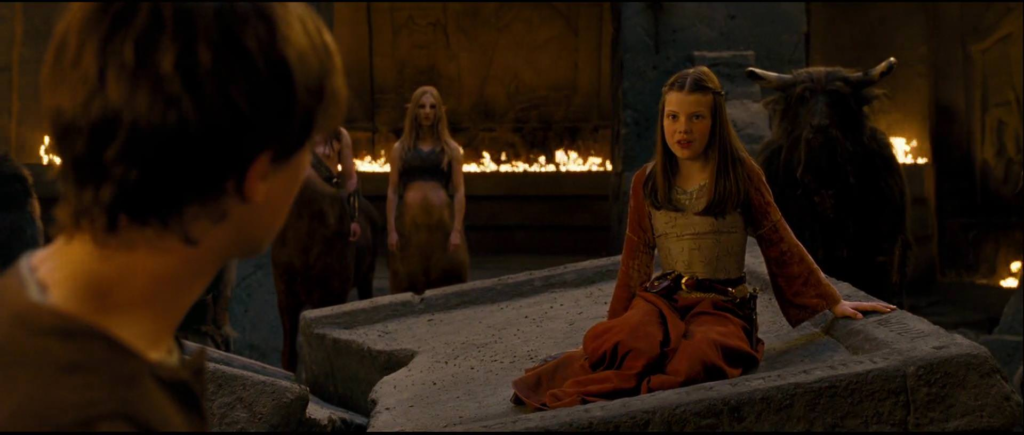
Peter: Sorry?
Lucy: You’re all acting like there’s only two options. Dying here or dying there.
Peter: I’m not sure you’ve really been listening, Lu.
Lucy: No! You’re not listening! Or have you forgotten who really defeated the White Witch, Peter?
Honestly, I don’t blame Peter for being confused. The movie doesn’t really do a good job of clarifying why Aslan, the one “who really defeated the White Witch,” would be against Peter’s proposal. Basically, what the adaptation is doing here is replacing Peter’s decision to follow the river rather than the invisible Aslan with this decision to attack the Telmarine castle rather than seek Aslan’s help. I’m good with that idea. While I may not be attracted to battle scenes per se, they’re probably more exciting than scenes of characters wandering in the woods. But in the book, Aslan specifically told Lucy (in the scene with the half-awake trees) to lead the others to him. He’s said no such thing in the movie’s version of the scene, so it’s not clear how the characters are defying him here. There are so many problems with this movie that could be easily fixed by a single, clarifying line of dialogue! It’s very frustrating. Anyway, the scene ends with Peter saying, “I think we’ve waited for Aslan long enough,” turning and striding out of the room. The camera shows the carved image of Aslan away from which he is walking. The script may not do a good job explaining how Peter’s plan equates to walking away from Aslan, but this is a great visual symbol of it. As I wrote before, this movie is good at keeping Aslan in viewers’ minds even as he’s physically absent.
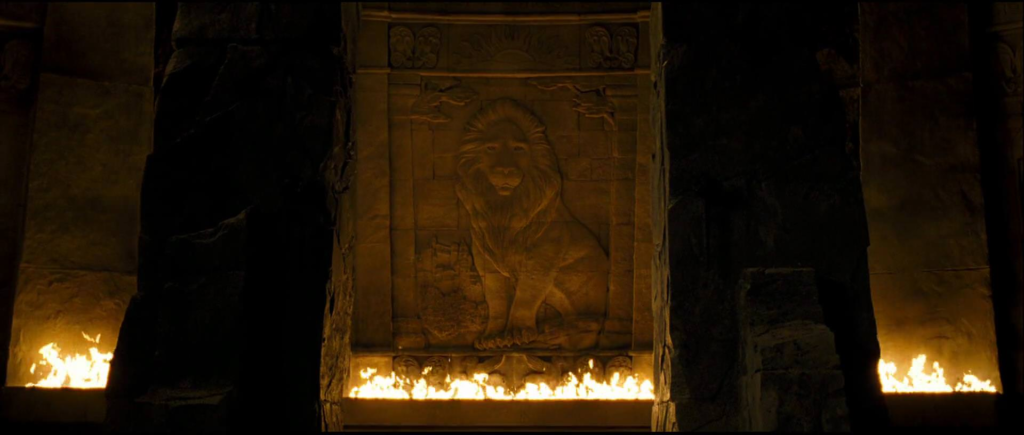
Next Week: I Take a Break from Narnia and Bring Back the Animation Station Feature. It’ll Be a Weird One but Hopefully Interesting.
References
| ↑1 | It applies to other worldviews that believe in a benevolent deity too but for purposes of simplicity, I’ll just refer to Christianity. I sincerely hope my readers who practice other religions won’t feel slighted. |
|---|---|
| ↑2 | I should take this opportunity to say that I’m sure Anna Popplewell and Ben Barnes could play a good couple. I just don’t think that couple should have been these characters. |
| ↑3 | Well, Trufflehunter might be too. |
